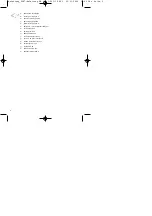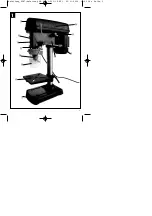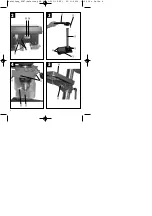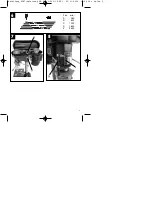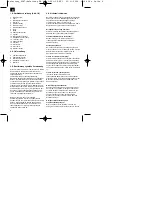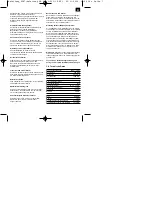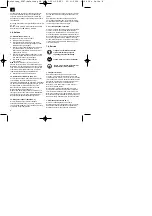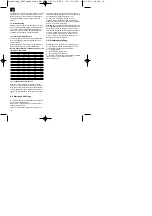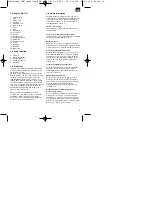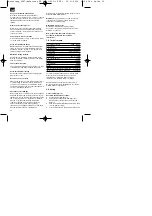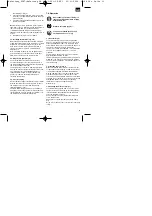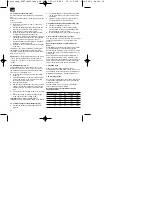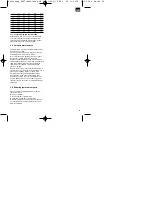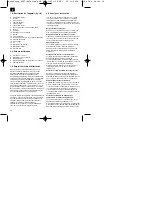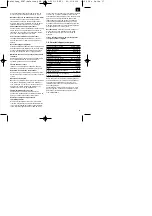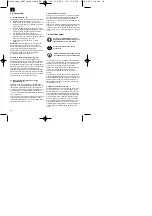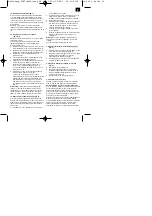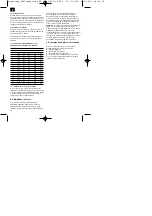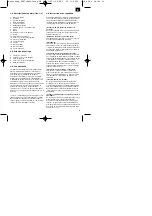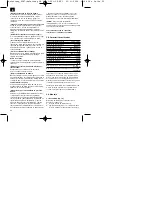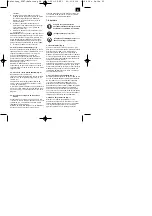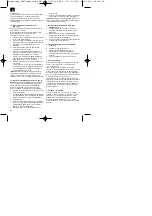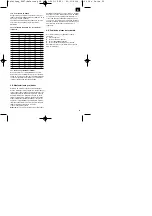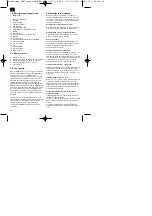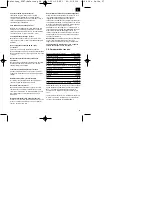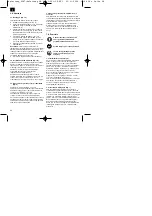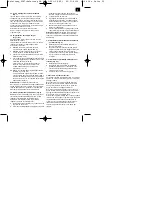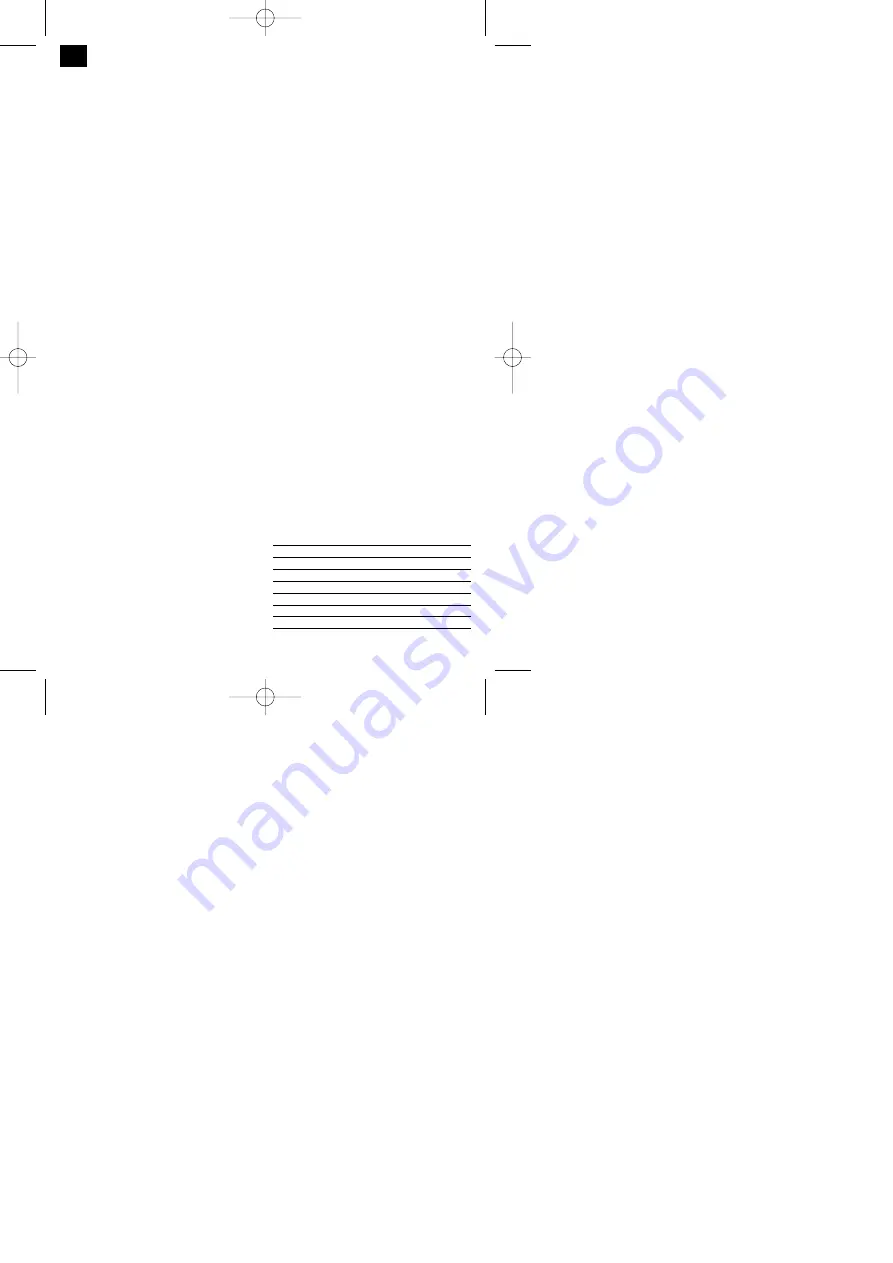
7.4. Setting the speed (Fig. 1/6/7)
First switch the machine off, then pull out the mains
plug.
The various spindle speeds can be set by moving the
V-belt.
Proceed as follows:
쎲
Remove the screw (16) in order to open the V-
belt cover (7).
쎲
Slacken the tightening screw (15) and push the
motor (8) in the direction of the machine head.
쎲
Move the V-belt to the desired position.
쎲
Refer to the table for the recommended speeds
for different drill bit materials (Fig. 7.10).
쎲
Tighten the V-belt by pushing the motor (8) back
from the machine head (6). Screw the tightening
screw (16) back down again. The tension is
properly set when the V-belt flexes in the middle
by approx. 1 cm when pressed.
쎲
Close the V-belt cover and screw down using the
screw (16).
The V-belt cover (7) must always be locked tight, as
the machine is equipped with a safety switch that
only allows the machine to be turned on when the V-
belt cover (7) is closed.
Caution!
Never let the pillar drill run when the V-belt
cover is open. Always pull the mains plug before
opening the cover. Never touch the V-belt when it is
rotating.
7.5 Drill depth stop (Fig. 8)
The drill depth can be set exactly by means of the
depth stop (14) and a scale (a) on the front side of
the machine head. The machine must be switched
off in order to set the depth stop.
쎲
Insert the required bit (7.2) and turn the setting
screws up.
쎲
Using the handle, move the bit so that its tip just
touches the surface of the workpiece and read
the value indicated on the scale.
쎲
Remove the workpiece.
쎲
Add the required drill depth to the value you read
off the scale and use the handle to lower the bit
until the value you calculated is indicated on the
scale.
쎲
Turn down the lower setting screw as far as it will
go.
쎲
Secure the setting by turning the upper setting
screw against the lower setting screw.
Important!
When setting the drill depth of a
cylindrical hole you must add the length of the drill tip
7.6. Setting the angle of the drill table (Fig. 6)
쎲
Slacken the carriage bolt (26) under the drill
table (4).
쎲
Set the drill table (4) to the desired angle (which
can be read off the scale on the top side of the
drill table).
쎲
Tighten down the carriage bolt (26) in order to
lock the drill table (4) into this position.
7.7. Setting the height of the drill table (Fig. 1/2)
쎲
Slacken the tightening screw (5).
쎲
Set the drill table (4) to the desired height by
pressing down or lifting up and simultaneously
(gently) pushing to the left or right.
쎲
Screw the tightening screw (5) back down again.
7.8. Locking the workpiece into position
As a general rule, use a machine vice (14) or another
suitable clamping device to lock a workpiece into
position.
Never hold the workpiece in place with your
hand!
When drilling, the workpiece should be able to travel
on the drill table (4) for self-centering purposes.
Ensure that the workpiece cannot rotate. This is best
achieved by placing the workpiece/machine vice on a
sturdy block.
Caution! Sheet metal parts must be clamped in to
prevent them from being torn up. Properly set the
height and angle of the drill table for each workpiece.
There must be enough distance between the upper
edge of the workpiece and the tip of the drill bit.
7.9. Drilling wood
Please note that sawdust must be properly
evacuated when working with wood, as it can pose a
health hazard. Ensure that you wear a suitable dust
mask when performing work that generates dust.
7.10. Working speeds
Ensure that you drill at the proper speed. Drill speed
is dependent on the diameter of the drill bit and the
material in question.
The table below acts as a guide for selecting the
proper speed for various materials.
Note: The drill speeds specified are merely
suggested values.
Drill bit Ø Cast iron
Steel
Iron
Aluminium
Bronze
3
2550
1600
2230
9500
8000
4
1900
1200
1680
7200
6000
5
1530
955
1340
5700
4800
6
1270
800
1100
4800
4000
7
1090
680
960
4100
3400
8
960
600
840
3600
3000
9
850
530
740
3200
2650
14
GB
Anleitung_SPK7:Anleitung SB 401-1-501-1 SKP 1 03.11.2006 13:06 Uhr Seite 14


